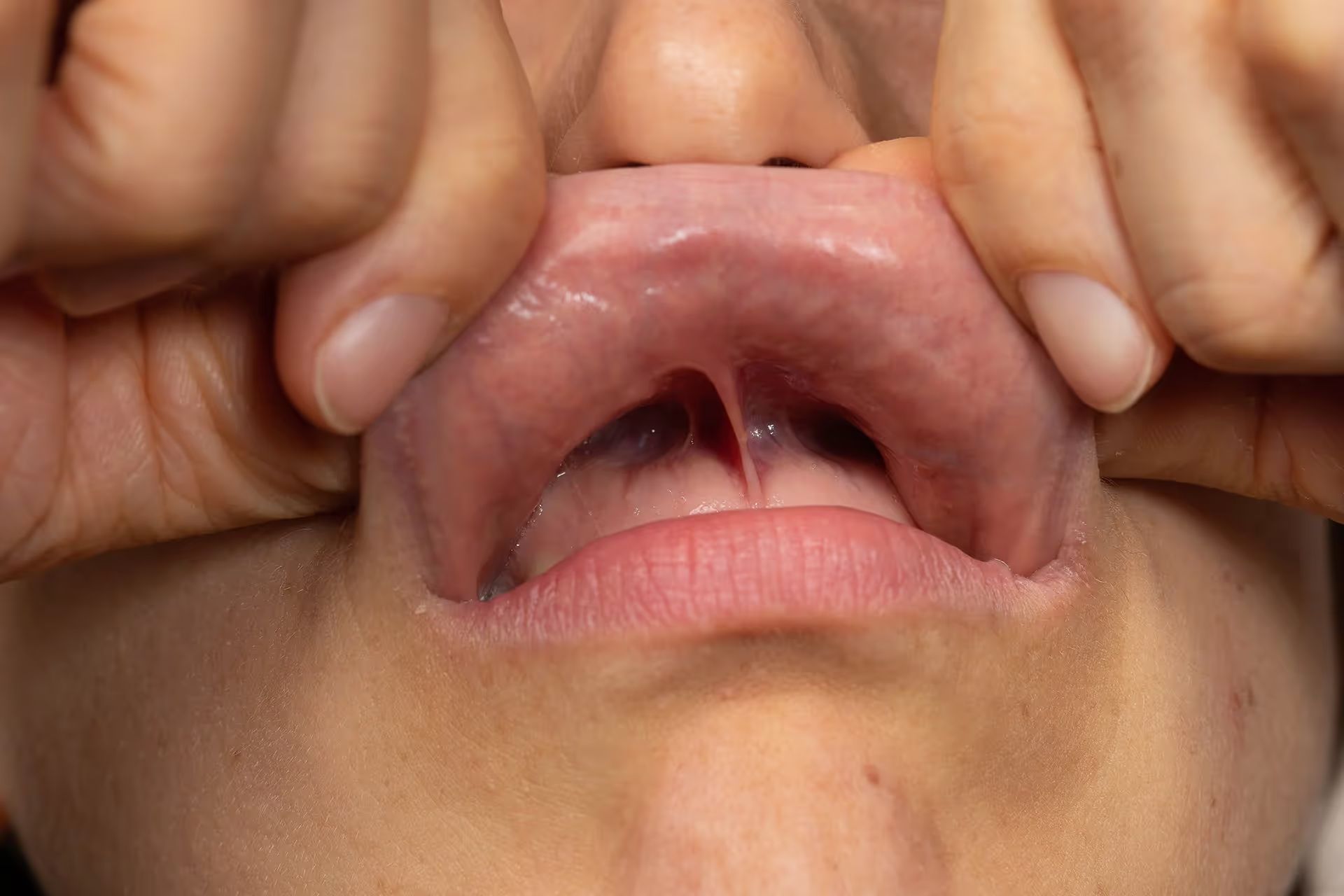
Frenectomiesin Fairfield County
Struggling to move your tongue or lip normally can be anxiety-inducing, but we’ve got a solution. A frenectomy is a painless procedure that releases unnecessary tissue, allowing you to breathe, swallow, and speak with ease.
Why should I get a frenectomy?
If you are dealing with speech, digestive, airway, gum disease, or orthodontic spacing issues, you may be struggling with a lip or tongue tie. This is when a thick band of tissue attaches to the tongue or lip, causing tension and restriction. A frenectomy is a simple procedure that quickly releases this excessive tissue in just a single visit. The best part? Getting your lip or tongue tie released is virtually pain-free.

Laser Therapy Offers Unparalleled Results
Frenectomies have never been more precise thanks to soft-tissue laser therapy. By emitting a powerful light beam at the lip or tongue area, the laser instantly releases the tethered tissue. The procedure is so precise, that it’s often completed in a minute or less.

Soothing Sedation Options
Keeping you comfortable and pain-free during treatment is our top priority. Talk to your doctor to learn more about what sedation option will work best for your frenectomy.

The Benefits of Frenectomies
Protects the Gums
When a frenulum goes untreated, it could pull the gums away from the lower front teeth. Over time, this could lead to a receding gum line. Getting a frenectomy can put a stop to this problem before it gets worse.
Prevents Future Health Issues
Frenectomies can cause speech impediments, eating problems, breathing issues, and make dental hygiene a hassle. But with a frenectomy, you can completely eliminate all of these risks and protect your overall health.
Fast, Simple Treatment
Including preparation, the entire frenectomy procedure typically takes less than 15 minutes. It’s painless and you’ll be done with your treatment before you know it. You’ll be able to get back to their normal day-to-day routine quickly, too.
Flexible Financing Solutions
The Frenectomy Process
Cleaning & Numbing The Area
To begin, your doctor will clean the surgical area, then apply a numbing cream to the lingual frenulum. This will help prevent any pain or discomfort.
Snipping The Lingual Frenulum
Your doctor will use a special tool to snip the lingual frenulum. This frees up the tongue and allows it to move properly within your mouth. Then, they will suture the frenulum to help it heal properly.
Recovery & Physical Therapy
Once your procedure is done, your doctor will send you home to recover. You’ll get a set of recovery instructions, and some exercises to perform as well. These exercises help move the tongue and restore its range of motion, and make sure that the tongue-tie doesn’t come back.
FAQs
Frequently Asked Questions
Check out these frequently asked questions, or call us to speak with our team.
Serious tongue and lip ties can make it difficult for you to eat, breathe, and speak properly, which can negatively impact your oral health.
There are a variety of visual signs for tongue and lip ties. For the lips, you can fold back your upper lip and look at the frenulum. If it is difficult to lift the lip, you may have a lip tie. Signs of tongue ties include an inability to stick your tongue out past your front teeth, or problems moving the tongue from side to side.
For children, a common sign of tongue ties is a “heart-shaped” tongue. When your child sticks their tongue out, the restriction caused by the tongue tie may cause it to look “notched” or heart-shaped, instead of appearing as a smooth “U” shape.
If you think that you’re having speech, digestive, airway, gum disease, or orthodontic spacing issues because of tongue or lip ties, you should get help from an oral surgeon right away.
Not at all. Your mouth will be completely numb throughout the procedure, and we use special tools at our office to eliminate pain and discomfort. With laser dentistry, you’ll experience minimal bleeding, and will be able to recover from tongue or lip tie treatment quickly and with low levels of post-operative discomfort.
A frenectomy will typically be covered by dental insurance, so you can get the care you need without worrying about high out-of-pocket expenses. Even if you do not have insurance, the cost of a frenectomy is quite low. Insurance plans vary, so make sure you consult with your dental insurance company to make sure you are covered for treatment.
To care for the surgical site, you will need to clean the treatment area twice a day to prevent infection and keep it healthy. Your doctor may also recommend some stretches for the tongue and/or lips. These stretches will help ensure that when the frenulum heals, it will not reattach and restrict your oral range of motion. Follow the instructions given to you and make sure you regularly perform all stretches recommended by your doctor.

